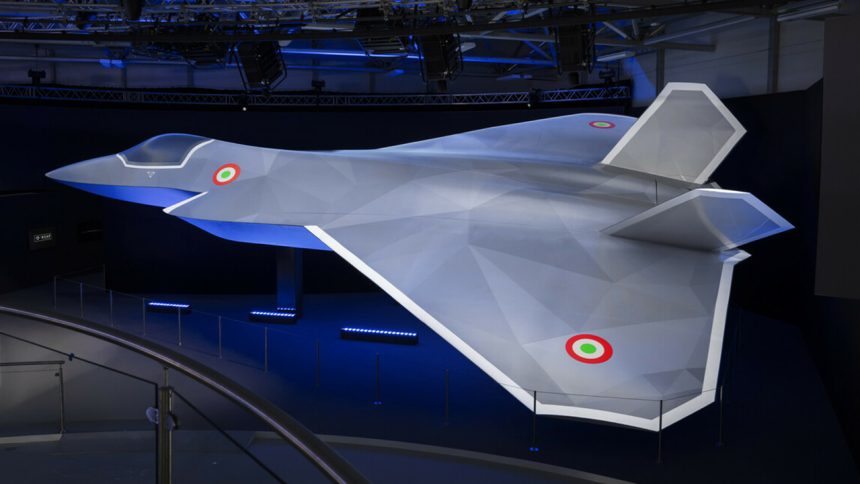The new concept model was unveiled at Farnborough International Airshow.
The Global Combat Air Programme (GCAP) partner nations, the UK, Italy, and Japan, have unveiled a new concept model of their future combat aircraft at Farnborough International Airshow 2024, opening today in the UK. This marks the first time these three nations have presented together at the event, demonstrating significant progress in their collaborative efforts to develop a next-generation combat aircraft.
The new concept model, that you can find at Hall 5, features an advanced design with a larger wingspan than previous iterations, aimed at enhancing aerodynamics. Engineers from BAE Systems, Leonardo, and Mitsubishi Heavy Industries, which are the industrial leaders (Lead Systems Integrators) on the GCAP, are jointly working on this project, employing innovative digital tools like computer-based modeling and virtual reality to refine the aircraft’s design during its conceptual phase.
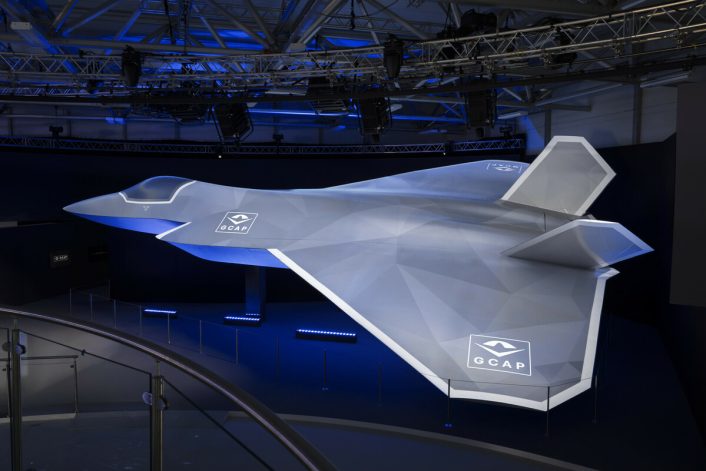
There are some interesting differences between the new model and the one showcased at Farnborough 2022 that you can see here below.
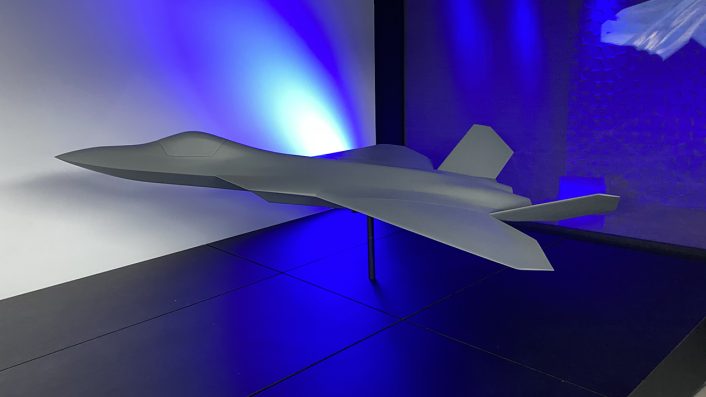
First of all, size: the new GCAP one is a 1:1 model, whereas the one on display two years ago was a scaled model. Then, what immediately struck our attention is the wing design: the GCAP model has a smaller wingspan, more streamlined and less angular; it looks like a pretty large cropped delta wing.
Both have twin vertical stabilizers, but the design may vary slightly in their positioning and angle. Generally speaking, the GCAP model appears to focus heavily on stealth with its angular, faceted design, whereas the Tempest seems to put more emphasis on aerodynamic efficiency.
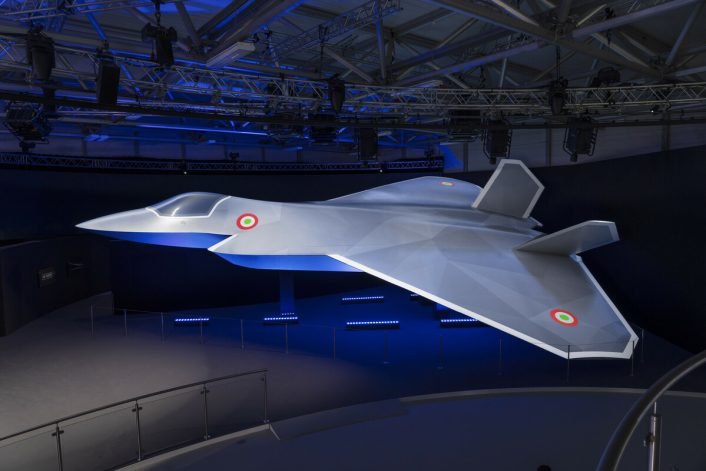
Both aircraft share similarities in their stealth-oriented design but differ in their approach to wing and overall aerodynamic design. The GCAP model has a more pronounced angular design, while the Tempest model emphasizes smooth, streamlined surfaces.
Another interesting difference is the fact that the new model features a camouflaged pattern and roundels.
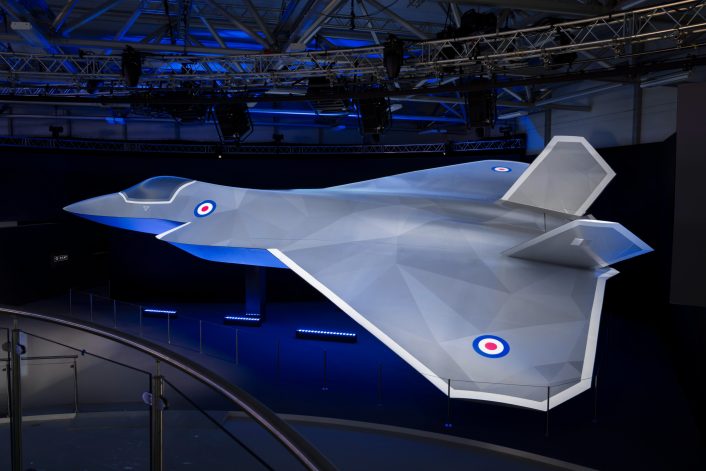
Guglielmo Maviglia, Chief Global Combat Air Programme Officer at Leonardo, emphasized the program’s rapid development and the strong commitment from each partner nation. He highlighted the complementary qualities and requirements brought by each country, which facilitate knowledge exchange and address common challenges. Maviglia noted the program’s significant importance for Italy and Leonardo, including their UK-based operations.
This needs to be added to the other shots you find in the article. They must have done the same with the other flags too (UK and Japan). H/T to our contributor @AljosaJarc https://t.co/G8oWMXkoim pic.twitter.com/8tYPqP2WWM
— The Aviationist (@TheAviationist) July 22, 2024
Herman Claesen, Managing Director of Future Combat Air Systems at BAE Systems, remarked on the progress made since the GCAP’s inception. He pointed out that close collaboration with industrial partners in Italy and Japan, as well as the three governments, has been crucial in aligning the requirements for the new combat aircraft. The unveiling of the new model at the airshow demonstrates substantial advancement in the aircraft’s design and conceptual development.
Hitoshi Shiraishi, Senior Fellow at Mitsubishi Heavy Industries, highlighted the value of GCAP as a three-nation joint development program. He expressed optimism that combining the different cultures, experiences, and knowledge of the participating industries would yield superior results and foster innovation in Japan’s industrial sector, including advancements in digital transformation and human resource development in science and technology.
The next generation combat aircraft, initially called only Tempest, is slated to fly by 2035 and aims to harness next-generation technologies, becoming one of the world’s most advanced, interoperable, adaptable, and connected fighter jets in service globally. Many new technologies are already being developed for the new aircraft, like a new powerful radar that can provide 10,000 times more data than current systems, an intelligent weapons system, a software-driven interactive cockpit, and a wide array of integrated sensors.
According to the public release accompanying the images of the new conceptual model:
GCAP is a strategically important partnership, bringing together the governments of the UK, Italy and Japan, and their respective industries, to collaborate on shared military and industrial objectives in the delivery of a next generation combat air capability.
The programme is hugely significant for the security, political and economic prosperity of each nation and through effective knowledge and technology transfer will help to evolve and deliver important sovereign combat air capability in each nation, for generations to come.
GCAP is set to employ tens of thousands of skilled people across the UK, Italy and Japan, growing industrial skills and technologies for the future.
GCAP
On Dec. 9, 2022, the Governments of Japan, UK and Italy announced the launch of the GCAP (Global Combat Air Programme) with the aim to develop a next-generation fighter aircraft, to be operational by 2035.
GCAP sees the convergence of the F-X and Tempest programs, for what deals the development of technologies for the sixth generation combat aircraft that will operate within a system of systems concept (or FCAS – Future Combat Air System), that also includes UCAVs/loyal wingmen and cyber capabilities. The three nations, through their national industry leads Leonardo, BAE Systems and Mitsubishi Heavy Industries, will collaborate as part of a joint venture that was in the air for some time actually. Interestingly, while the UK led Tempest and Japan led F-X, the GCAP will have no lead nation or company.
At the end of 2023, the Defence Ministers from Italy, Japan and UK met in Tokyo to sign the Convention of the Establishment of the “Global Combat Air Programme – GCAP International Government Organisation (the GIGO)”. The treaty confirmed the United Kingdom will host the joint GCAP government headquarters, while the first “Director General of the GCAP Agency” will come from Japan and the first “CEO of the industrial Joint Venture” will be Italian.
Within the UK, the effort is being led by BAE Systems, in close partnership with Lead Sub-System Integrators being Rolls-Royce, Leonardo UK and MBDA UK – as well as hundreds of companies in the supply chain from across the country. In Italy, the program is led by Leonardo IT, in collaboration with MBDA IT, Elettronica Group and Avio Aero, while in Japan it is being led by Mitsubishi Heavy Industries in collaboration with IHI Corporation.


